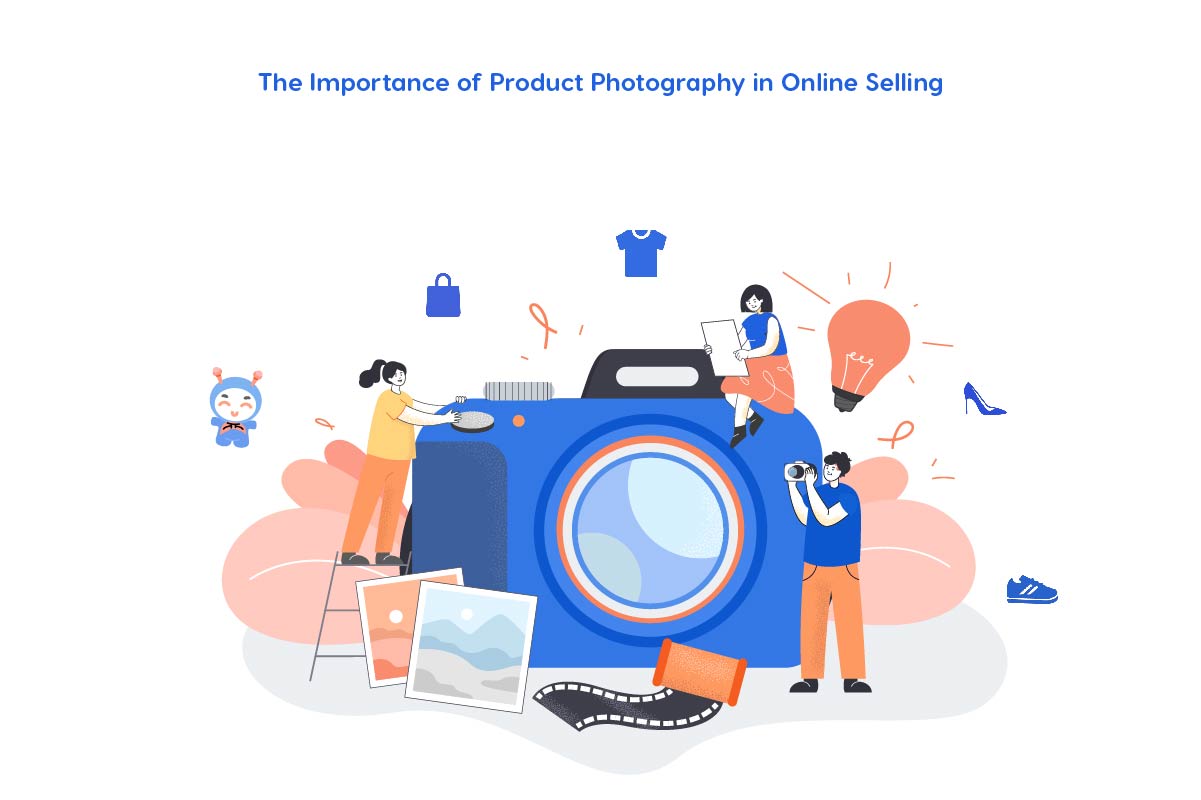Conversion is what you can understand by the word, a process of changing something’s state from one to another. So basically, your aim in conversion copywriting is to persuade the reader and your audience, and convince them to act upon or make different decisions. Conversion copywriting is a special persuasive writing that generates the desired action from the readers. You can do persuasive writing to make the readers purchase some specific products or services. Or you can take help from conversion copywriting if you want your reader to sign up for any newsletter or to make them fill out any sort of form.
Being a persuasive buddy who helps his friend to make a decision is similar to conversion copywriting. The goal is to make it obvious why something is worthwhile, not to manipulate. Consider it similar to giving your reasons for enjoying your favourite coffee shop, as you’re not merely presenting information. Rather, you’re creating an impression that entices people to visit. That’s what conversion copywriting is all about.

Ready to make your blog stand out and truly connect with your readers? Let’s read more about the things while writing content.
Importance of Conversion Copywriting
To be perfectly frank, businesses do not prosper on goodwill alone. They need people to act. That’s when conversion copywriting becomes useful. That’s the key difference from a forgettable pitch to a convincing conversation that does convince someone to buy. Highly effective conversion copy transforms casual readers into loyal customers, allows businesses to reach real people at a human level, and makes marketing more efficient by increasing results. Most importantly, it addresses truly important issues, not just discusses them, so every word counts in the process of obtaining real results.
Process of Conversion Copywriting
Here I will list some easy and useful steps for you if you are struggling with “how to do conversion copywriting” issues. Just follow the steps given below;
Step 1: Research
If you want anything to be in the right way and truthfully, research is the only thing that can make it happen. And being a writer or copywriter, you should be a detective in the matter of research. Research is the very first step you have to take in conversion copywriting. Before writing anything, you need to get a deep understanding of who your audience is and what is audience’s interests and behaviour patterns are. Because without knowing your audience and getting to the surface level, you can not write something that can persuade and convince them to take action.
Use real dialogues with your customers – try to hear what problems, needs, as well as what they like or dislike about other products they have. Immerse yourself in reviews and feedback to get a feel for the very words they use to talk about their experiences. Make an effort to determine the trends in the issues they face and how your product or service might help. Notice their feelings, what upsets them, and what makes them happy? Then, speak their language. When your message is spoken in the same way they speak naturally, it sounds more believable and human. Knowing things about your audience, the deeper your understanding of them, the easier it will be for you to manufacture copy that people can relate to and take action upon.
Step 2: Plan To Write
Can you think about going on a road trip with your friends when you do not have a Map? Jumping directly into the conversion copywriting with planning for it is similar to the above case. Outlining the content you are about to write is gonna result in the best outcomes you can have. Explore the points and the key ideas, and make them stand out as the first to be seen, as these should immediately capture the attention. Arrange your information in such a way that it will flow well and be easier to follow. Put your call-to-action (CTA) and make it feel natural, and push the reader to take the next action. Apply visuals that go hand in hand with the message you tell, which will help make your words stronger. Give thought to how the eye will be directed across the content and format it in a way that is easy to read in terms of skimming and absorbing. A thought-out layout of your message will make your message clearer, more captivating, and much more persuasive.
Step 3: Write Like a Human
When you are done making an outline and plan for the content, you are about to write. Now is the best time to start writing the content. But while you are writing, make sure you are not making things more complicated. When doing conversion copywriting, your focus should be on solving the real problems. Your writing should make it clear to the audience how you are making their lives easier. Your tone of writing should be more persuasive, warm, conversational, and easy to understand. Try to be clear in your writing about how you want your audience to act and what decisions you want them to take. They should be in a situation to guess on their own about what they should do next. Share authentic stories, testimonies, or data to support your claims to establish credibility. Remember, people want to be assisted, not put under pressure. They are far more inclined to interact with your message when it feels genuine and honest.
Step 4: Test and Check for Improvements
Do not think that you are done with your task when you are done writing your content, as it is just the beginning, you still have to do so much stuff. When you think you have written your content, what’s next is refining and testing that content for improvements. Because a writer is always on duty and great content is never finished, you need to keep working, as there is always room for improvement. Notice the way that people engage with it, are they clicking your links, reading right to the bottom? Make use of analytics tools to determine what is and is not resonating. Experiment with different versions, like a small change, a fresh headline, or even a call to action (CTA), can yield amazing outcomes. Treat your copy as a living document, as the most effective messages are the ones that evolve and get better over time to drive more conversions.
What are Some Common Content Writing Mistakes? Let’s read more about it.
Step 5: Always look for Betterment
Great copywriters don’t write something and forget because they never stop learning, experimenting, and improving their copy to be better. They realize that even high-performing content can be bettered; therefore, they keep tweaking and optimizing it. They remain curious about their audience, they always dig deeper in identifying their needs, preferences, and behavior. They are not afraid to experiment with new approaches, modify tones, and message styles. And they remain open-minded, because things that worked yesterday may not work tomorrow. Great copywriters are lifetime learners. They are continually improving, changing, and getting better.
Step 6: Build an Emotional Connection
When you think from the buyer’s perspective, you realize that he is not buying a product or service. He is buying a solution to his problem, a relief to his issues, a joy for his special moment, or the confidence for his personality. So indirectly, every purchase has some sort of emotion behind it. For your product to be purchased and the copy to stand out, it should have an emotional connection with the buyer and the reader. In your writing, you need to put such emotions and words that will mirror the reader’s feelings and thoughts. So they can have a feeling of being heard and addressed. Establish an emotional bond to foster trust, since individuals are more willing to go forward when they feel heard. Effective conversion copy resonates rather than merely informs.
Examples of Conversion Copywriting
A conversion copywriter knows and requires the art of both theory and practical application in content creation. So to understand this art, it is better to read some real-life conversion copywriting examples. So let’s just discuss some of the best conversion copywriting examples.
Evernote
In conversion copywriting, Evernote is the best example. Evernote is an application that is used for note-taking and task management in conversion copywriting. Users can record ideas, notes, web clips, photos, audio, and documents, then locate and organise them all in one location. The phrase used by Evernote, “Tame your work, organize your life,” explains all that it does and how it helps. Evernote assists you in getting your work and life organized, whether it’s personal or professional. Its “Sign Up for free” button is an open invitation for you to join and work without making any payment, which is the most appealing thing. Some slogans of Evernote are;
- Work Anywhere
- Remember Everything
- Turn To-Do Into Done
- Find Things Fast
Everyone in this century knows Pinterest for its inspiring and persuasive content, and it inspires a huge number of people out there. Pinterest is another example of the best conversion copywriting because it uses both visuals and content to inspire and attract the readers’ attention. Pinterest always has something for everyone. No matter what mind you go on Pinterest, you will always find your answers there. The quality of the copy on Pinterest is very high because it is short but persuasive, useful, and has the spark in it. To put it briefly, Pinterest’s copy works well because it is inclusive, simple to read, action-oriented, and community-driven, all of which encourage users to become members.
Sundose
When you visit the Sundose’s homepage, you will get to know why it is the best example of Conversion Copywriting. Because you will see the highly persuasive marketing copy employed there that encourages the readers to come and interact with their products and supplements. The opening statement of this website is “Your Personalised Supplement. Accurate. Easy. Better.” This instantly creates a connection with a reader and draws their attention to CTA buttons.
Headscape
The website of Headspace serves as an illustration of effective conversion copywriting by combining strong strategic urgency, value proposition clarity, and emotional appeal. With sympathetic words, time-limited offers, and recognizable user testimonials, it connects to visitors’ aims regarding mental health, stress relief, and better sleep. Through this context, Headspace expands its reach and builds itself as an all-around well-being platform by showcasing solutions for families as well. Overall, the site’s copy not only educates but inspires action, making it a good example of persuasive, user-focused communication.
Duolingo
Another example of conversion copywriting is Duolingo. Duolingo is a website that incorporates a bombastic combination of motivational language and clear benefits-driven copy to convert a visitor. The bold and eye-catching opening statement on the homepage of the website says, “The free, fun, and effective way to learn a language!” It says it all about Duolingo with leaving a lasting impression in the mind of the reader or a visitor. Duolingo uses a direct but concise language in its copy that becomes easy to understand for the readers.
Struggling to grow your Instagram without paid ads? Read more about the proven strategies in our tips below!
Final Words
In conclusion, conversion copywriting is more than just writing—it’s about understanding your audience, addressing their needs, and guiding them toward action through compelling, persuasive content. By following a strategic process and using proven techniques, you can craft copy that not only captures attention but also drives results. Whether you’re writing for a website, ad, or landing page, effective conversion copy can be the difference between a bounce and a sale.





